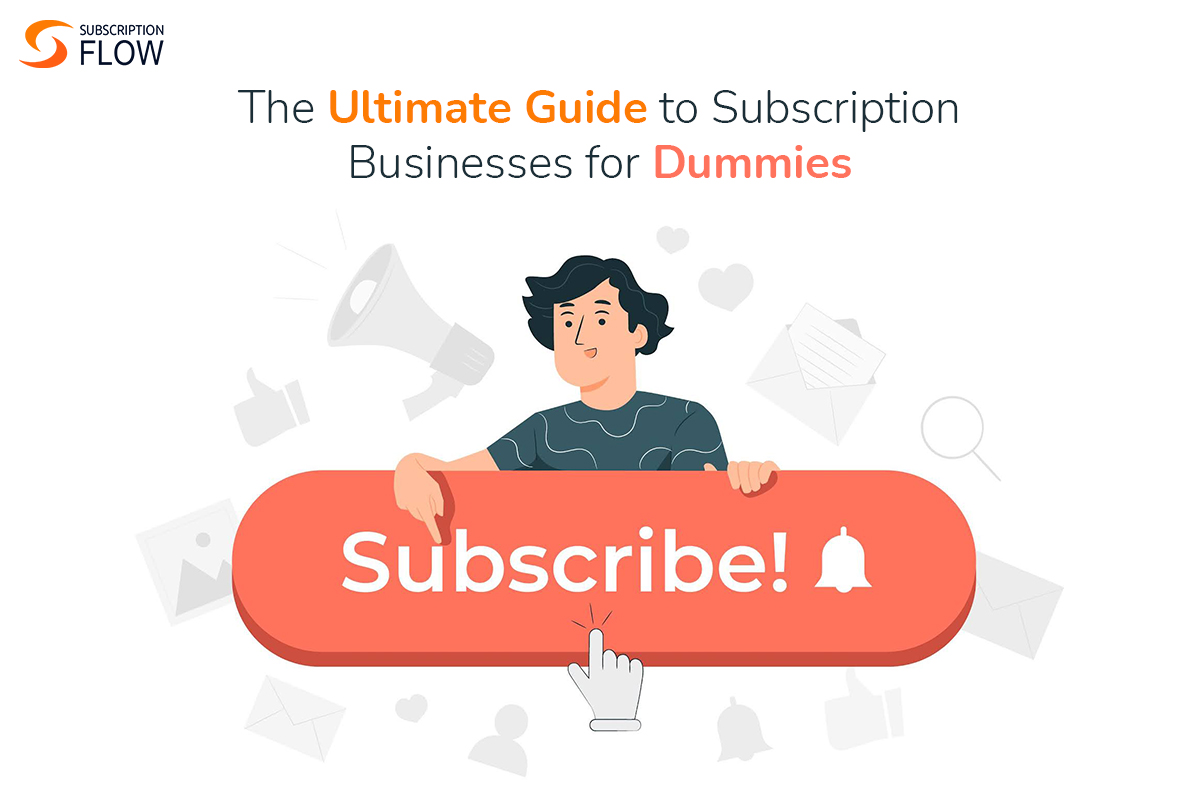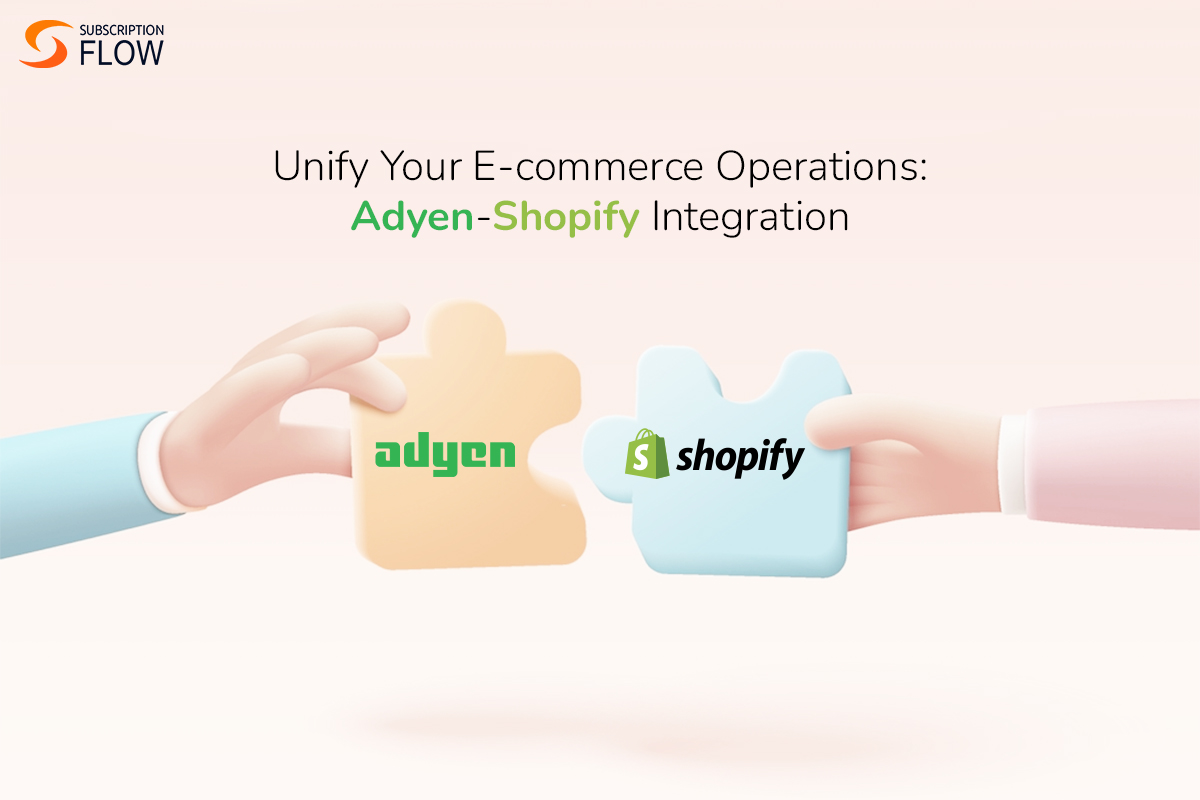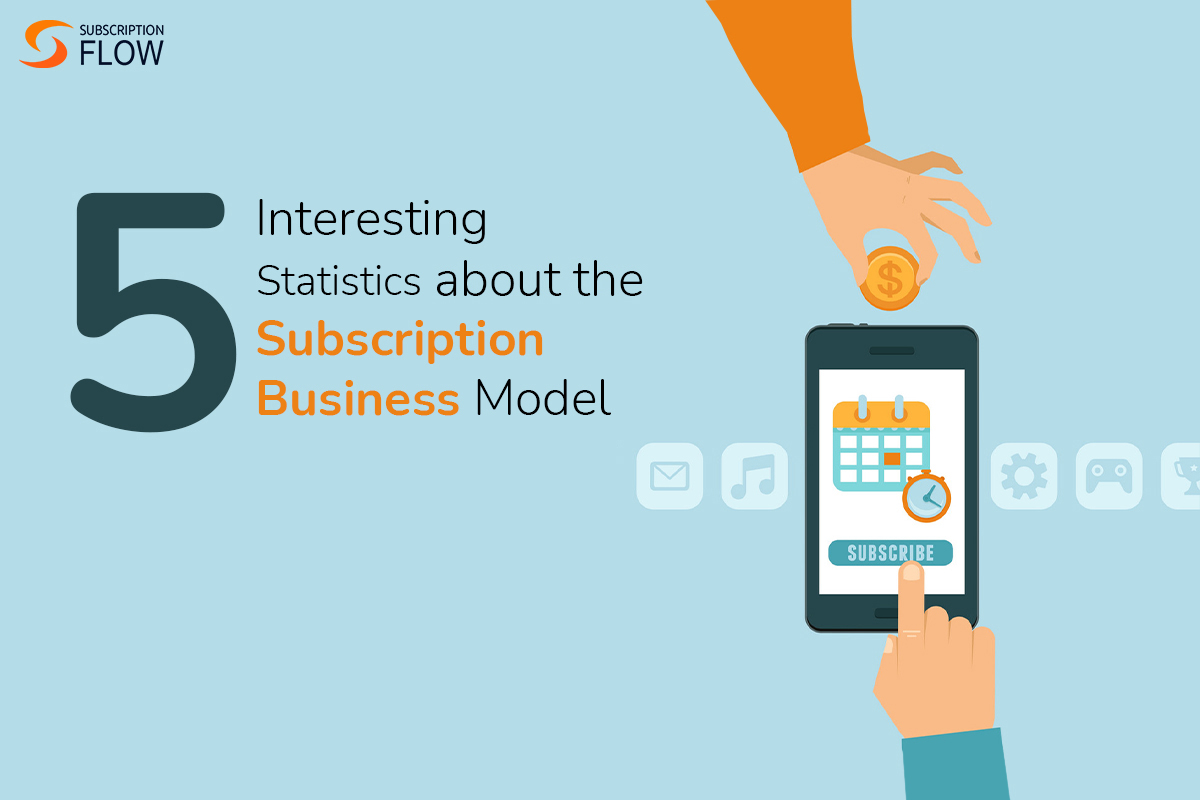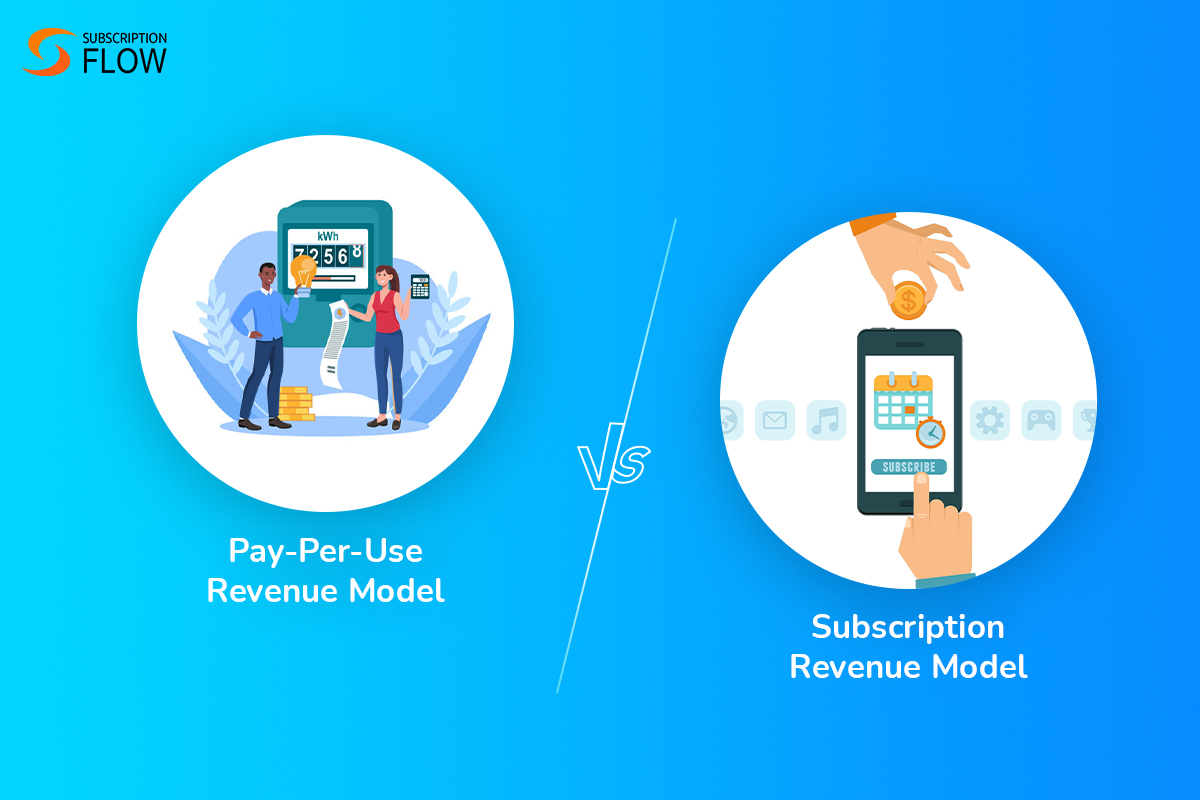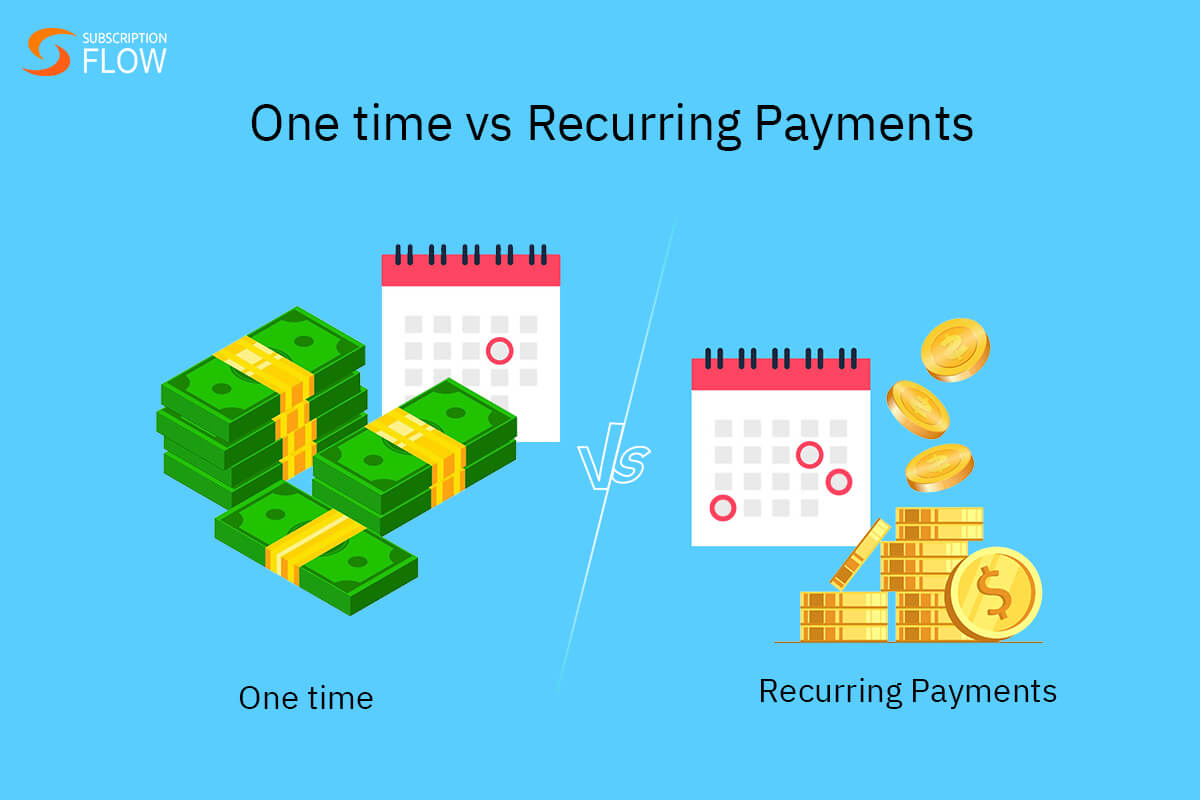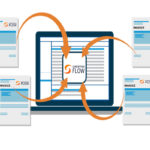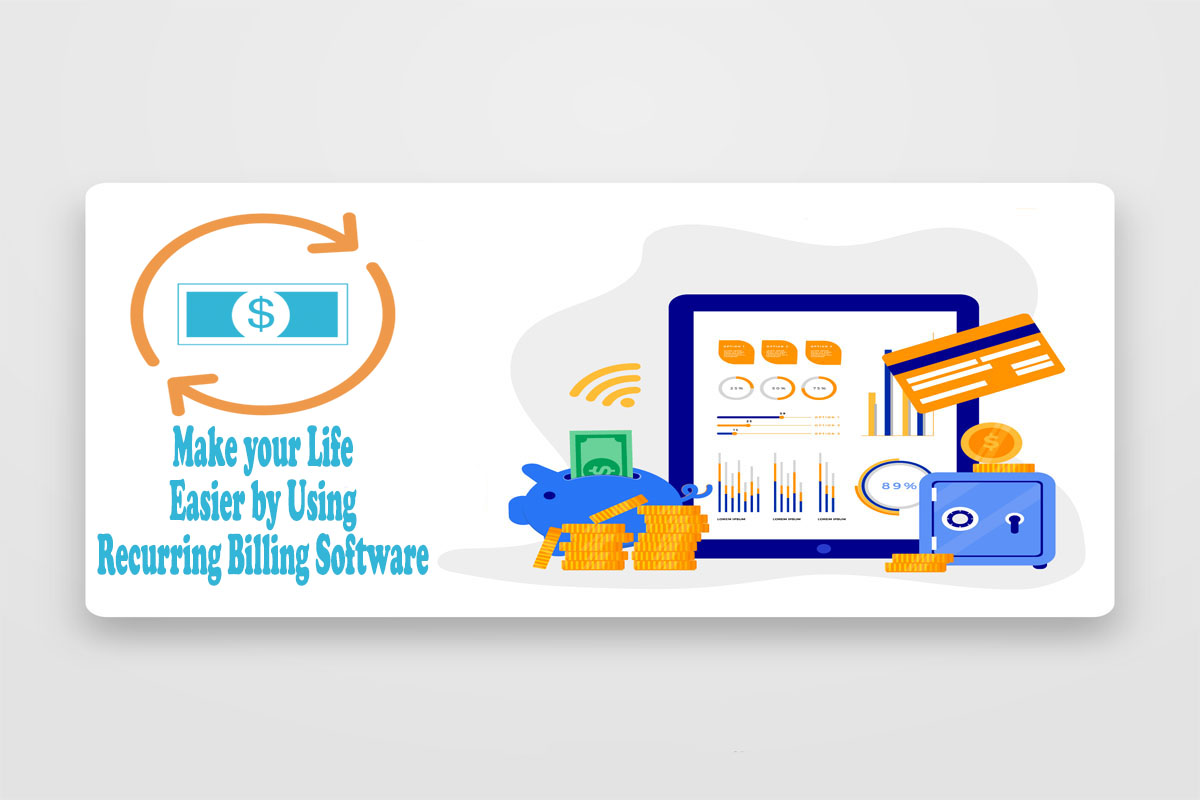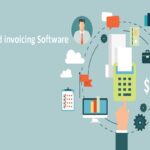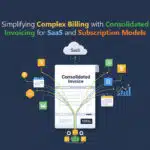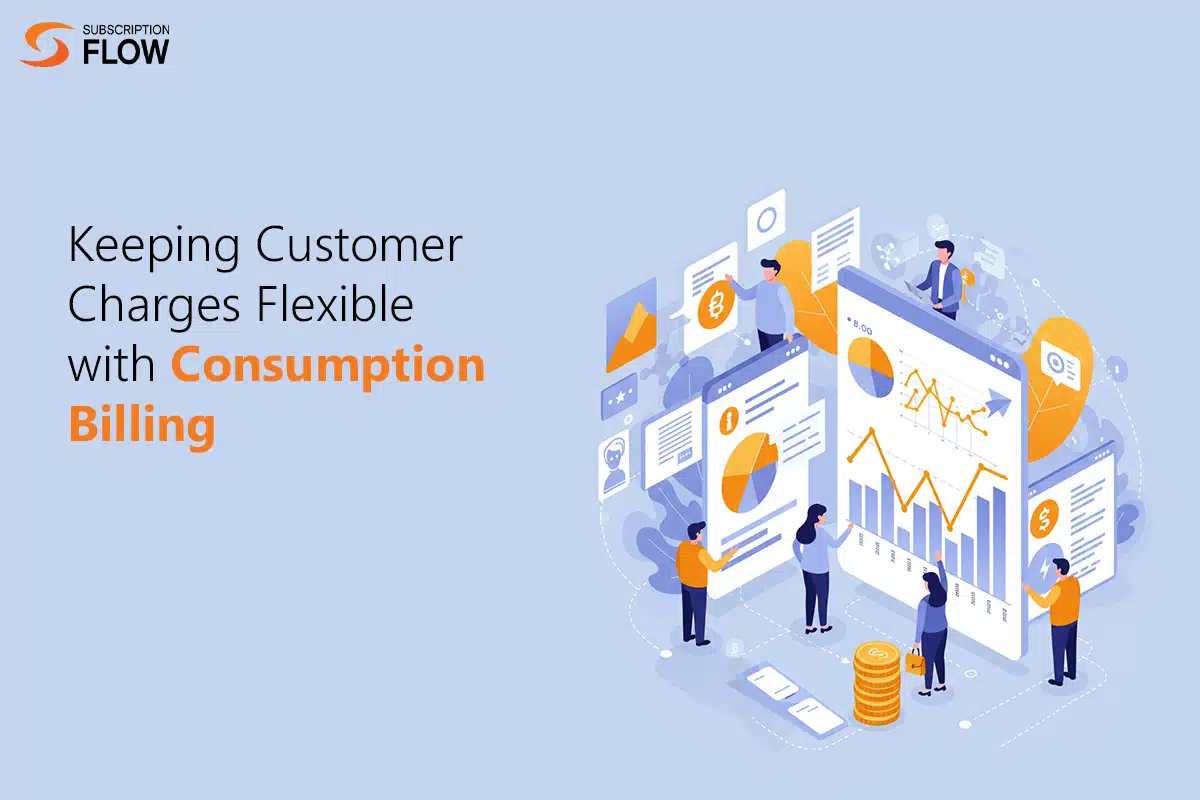
Keeping Customer Charges Flexible with Consumption Billing
Gone are the days when flat-rate subscription billing used to lead. Customer expectations are rapidly evolving, and so is the subscription billing model. Today, customers want to be charged for only what they use. Extra charges are considered unnecessary and unfair.
Advanced billing systems allow businesses to bill based on consumption. Consumption billing offers next level customer satisfaction, and unlocks new opportunities for recurring revenue growth.
In this article, let’s explore all that you need to know about consumption billing. Let’s also find out how SubscriptionFlow optimizes consumption billing for subscription businesses.
What is Consumption Billing?
Consumption billing, also known as usage-based billing or pay-as-you-go billing, is a model that allows merchants to bill according to customers’ usage. With this billing model in place, businesses can easily adjust the charges of their subscribers according to their consumption levels.
Thanks to the cloud-based nature of subscription services, billing systems can smartly detect consumption levels. User consumption can be measured based on certain units. These units differ according to the nature of the services.
For instance, cloud storage companies might use 1 GB as one storage unit. They can allocate a fixed price to 1 GB storage, and then charge users based on the total GBs they consume. Similarly, specific time periods (such as 1 hour), total usage duration, API calls, etc. can also serve as usage units.
Types of Consumption Billing
These are some popular consumption billing models today:
- Metered Billing
For metered billing, companies clearly define a storage unit, and then allocate a fixed price to that unit. For instance, a cloud-storage company allocates a charge of $0.10 to 1 GB storage consumed. If a user consumes 50 GBs in a month, their charge would be:
$0.10 x 50 = $5
Metered billing ensures that users only pay the price for what they have consumed. Their total charges rise and fall based on their consumption patterns.
- Tiered Pricing
In this kind of pricing, businesses set up certain consumption tiers. Each tier is assigned its own unique price. For instance, there is a company that allows users to generate AI-images. This company has set up these tiers:
Images generated 0-100: $0.10 per image
Images generated 101-200: $0.15 per image
Images generated 201-300: $0.20 per image
If a customer generates 300 images in a month, their charge calculation would look like this:
For the first 100 images: 100 x 0.10 = 10
For the next 100 images: 100 x 0.15 = 15
For the final 100 images: 100 x 0.20 = 20
Total: $45
Hence, the price per unit changes in each tier, and the total charge is calculated accordingly. In this example, we can see the prices slightly increase as the tiers progress.
However, this model can also be used by companies to extend tiered discounts. In such discounts, the price per unit falls with each subsequent tier.
- Volume Pricing
This pricing model also involves tiers like in tiered pricing. However, as the tiers progress, the price per unit decreases for all tiers. This is different from tiered pricing, because in that model, the per unit prices are restricted to specific tiers.
But in volume pricing, the price per unit for the subsequent tiers also becomes applicable to the previous tiers. Thus prices are not restricted within different tiers.
Suppose there is a company that allows users to paraphrase articles using an online tool. It offers volume pricing:
Articles paraphrased 0-100: $1 per article
Articles paraphrased 101-200: $0.5 per article for all articles
Articles paraphrased 201 and further: $0.1 per article for all articles
If a customer paraphrases 300 articles in a month, their total charge would be:
300 x 0.1 = $30
Volume pricing is more straightforward, as charges are generalized. Thus, it is easier to calculate.
- Overage Pricing
In this model users are charged extra if they consume a service more than its standard limit. For instance, a music streaming service charges customers a standard amount for 300 songs per month. Such as $10. If subscribers exceed this limit, they are charged $0.10 for each extra song streamed.
This model is flexible as it allows companies to set up both standard and overage fees. This ensures that they always remain in a profitable situation.
- Prepaid Credits
Companies allow customers to buy and keep prepaid credits. These credits work like tokens. Each service that a company offers costs a certain number of these tokens. Whenever customers utilize services, the credits are deducted from their accounts.
When these credits end, customers can simply pay upfront and restore them. This gives them a control over their spending and service usage.
Why Businesses Choose Consumption Billing?
Consumption billing comes with a bundle of benefits such as:
- Value for Money
Customers are charged for only what they have consumed. This means that they can tie their payments directly to the service value. Flat-rate subscriptions overlook this aspect as companies charge standard fees no matter how much the usage.
This can confuse customers regarding the service value. They might not be able to find a strong connection between the money they spend, and the value they receive. Consumption billing removes this confusion.
Consumption billing promotes customer satisfaction, as it is in line with customer demands. Customers don’t like to be overcharged. This billing model promises them just that. They can pay exactly for what they consume, and in this way they can control their charges significantly.
This increased control over service usage and charges helps improve customer experience, and boosts retention. This billing model also increases transparency in service prices. When customers are issued their invoices based on service consumption, they can clearly see how their charges have been calculated.
- Scalable Revenue
Consumption billing is a great fit for businesses that offer cloud-based subscription services. There is a limit to how much usage can be measured in physical subscriptions, such as subscription boxes.
But it’s a different story with online subscriptions, as smart billing systems can easily monitor, and record usage online. This presents businesses with a great opportunity to scale their revenue. In flat-fee models, businesses can only charge a standard fee no matter how much service their customers consume.
But with consumption billing, customer charges rise with the rise in their usage level. The more usage, the more revenue businesses make. This is ideal for companies that have active and enthusiastic consumer bases.
Challenges of Consumption Billing
This billing model is great, but not without an advanced billing system, such as SubscriptionFlow in place. If companies lack such a system, sticking to the flat-fee model is better.
Why? because it gets increasingly difficult to implement consumption billing manually, or with conventional, or legacy systems. These are some challenges that arise:
- No Real-Time Usage Tracking
Consumption billing models often require real-time usage tracking to accurately measure a user’s consumption level. Without this system in place, some usage-models cannot be employed at all.
For instance, if a company wants to charge its users based on the duration of their usage, it can’t do that without an advanced metering system. It will simply be a wasted effort.
- Complicated Billing Calculations
The billing model involves too many complex calculations that are nearly impossible to carry out manually. That is because manual calculations can be imprecise and error-prone. The more customers a company has, the more complex calculations it has to deal with.
The complexity of the calculations also depends upon the consumption billing model offered. If companies give out tiered discounts, for instance, their calculation can get out of hand pretty fast if done manually. Moreover, each customer’s bill requires a separate calculation, as usage can differ vastly.
- Confusing Invoices
Robust billing systems generate clear invoices, with easy to understand price and usage breakdowns. But if this is done manually, entering each customer’s separate charge and usage details on each invoice is simply too time-taking, inefficient, and error-prone.
This can lead to unclear invoices that confuse customers and beat the entire purpose of consumption billing i.e. transparency in charges.
- Reduced Revenue Predictability
In flat rate billing models, revenue forecasting is easier. Why? Because customers are charged the same amounts each billing cycle. So when the time of subscription renewals arrive, businesses can expect the total amount beforehand.
This is not the case in consumption billing. Customers’ usage levels are unpredictable. Customers pay according to usage. This means that their payments are unpredictable as well. Businesses receive amounts that cannot be predicted beforehand.
They might see a sudden spike in their revenue, if their service consumption peaks during a period. They also might experience a significant decrease in revenue over a certain period. This makes their revenue streams unstable, and unpredictable.
- Higher Churn
Consumption billing boosts retention, yes, but if not handled efficiently it can increase churn too. That is because in this billing model, customers are not required to pay upfront. They are only billed after their usage period ends, because their bill depends upon usage.
When customers pay upfront, they are more likely to stay committed as their payment would go to waste otherwise. But in consumption billing, they might utilize the service first, and then be unwilling to pay. They might even unsubscribe midway, and pay only for the little they used.
This can cause problems for businesses at the time of payment collection. They need to have a dunning system in place to deal with problem payments.
How Consumption Billing and Standard Billing Come Together to Boost Revenue
Consumption billing alone might lead to unstable revenue as we explored above. However, businesses are implementing smart hybrid billing models, that combine both consumption and standard charges, to bill more flexibly. For instance, the overage pricing model discussed above.
Hybrid billing models are also becoming a need for businesses that offer flexible services on a subscription basis. For instance, they are essential for the AI service industry that offers language models, image generators, and paraphrasers to name a few services.
In a hybrid model, businesses can charge both fixed service amounts, as well as consumption-based charges. If they are offering monthly subscriptions, they can fix a small upfront fee for each subscription plan, and then calculate the rest of the fees according to usage.
This ensures fairness for both businesses and customers. Customers can still control the major part of their charges through usage, and businesses can still ensure some cash flow stability. Moreover, the small upfront fees can encourage customers to stay committed, thus boosting retention.
How SubscriptionFlow Optimizes Consumption Billing
SubscriptionFlow is an advanced billing engine purpose-built for subscription businesses. With SubscriptionFlow, businesses can efficiently address the challenges of consumption billing given above. These are some of our features designed to make consumption billing smooth and effective:
- Real-time metering for accurate usage-measurement
- Accurate application of tiered and volume discounts
- Intelligent dunning management to recover failed payments
- Automatic proration for plan changes
- Automated invoice generation for clear and accurate invoices
- Subscription reports and analytics for evaluating consumption billing performance
SubscriptionFlow also offers a range of pricing models that facilitate consumption billing:
- Usage based pricing
- Volume pricing
- Tiered pricing
- Flat-fee pricing (that can be employed alongside the usage-based models)
- Hybrid billing
Book a demo with SubscriptionFlow now to seamlessly implement consumption or hybrid billing. We handle complicated payment scenarios efficiently.

